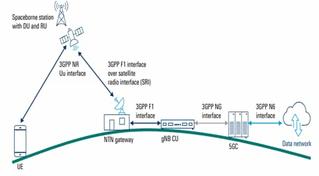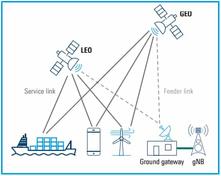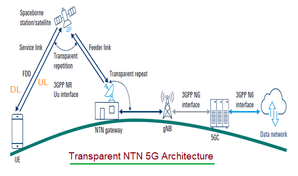Difference between RTT vs differential time delay
Advertisement
Both terms i.e. Round Trip Time (RTT) and differential time delay relate to latency, but measure different things.
Round Trip Time (RTT)
- It is the total time taken for a signal to travel from the transmitter (e.g., UE or gNB) to the receiver (e.g., satellite or gateway) and back again.
- In NTN, it represents the end to end propagation delay over the uplink and downlink paths combined.
Where, Tup : Uplink Propagation Delay Tdown : Downlink Propagation Delay
- Measures how long a signal takes to make a complete round trip between ground and space nodes.
- Depends on satellite altitude and path geometry.
- Typical values : ~240 ms (GEO), ~10-20 ms (LEO)
Differential Time Delay
- It is the difference in signal arrival times at different receivers (or different points in a beam) caused by variations in propagation distance from the satellite.
- It is the delay variation across the coverage area of a satellite beam.
Where, T1 : Propagation delay to UE1 (at one point of the beam) T2 : Propagation delay to UE2 (at another point of the beam)
- Represents how much longer (or shorter) the signal takes to reach one user compared to another within the same satellite footprint.
- Caused by the curvature of the Earth and the slanted path to users at the beam edge.
- Typical values : Up to few milliseconds for GEO, Tens to hundreds of microseconds for LEO
Summary : RTT is the absolute propagation delay, while differential time delay is the variation in that delay across a single cell’s coverage area.
Advertisement
 RF
RF

